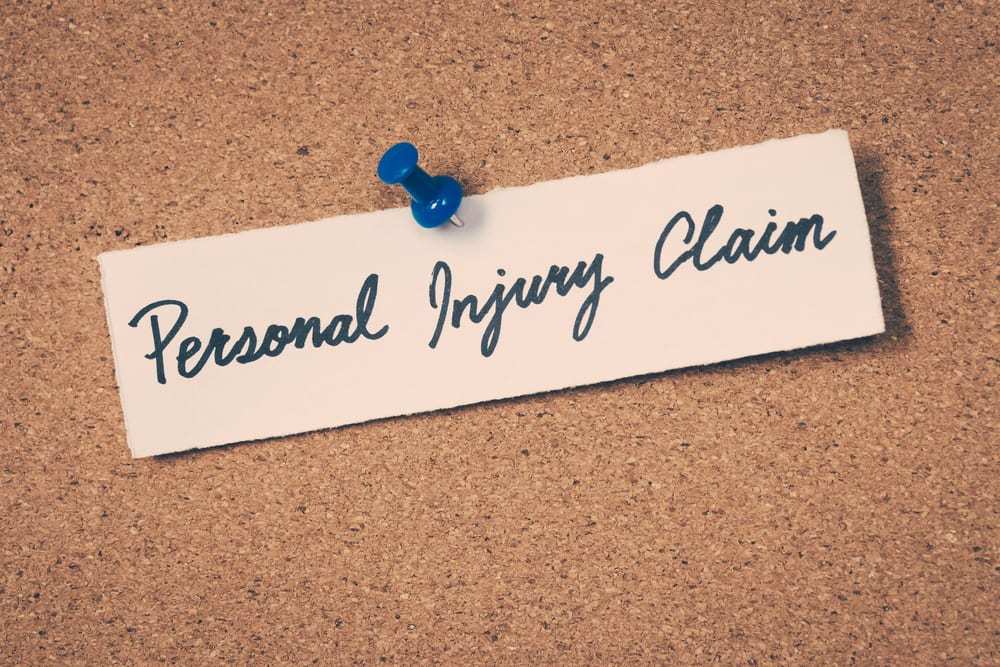Each year, thousands of people are injured in different types of accidents, but not all injuries provide the grounds for filing a personal injury lawsuit. Injuries that arise from accidents that are caused by the negligence or wrongful actions of others may meet the legal definition of personal injury. To determine whether or not you can successfully pursue a personal injury case, consult an experienced attorney who can review your specific situation.
What Is the Legal Definition of Personal Injury?
Under the legal definition of personal injury, a personal injury occurs when a person’s body, mind, or emotions are injured as a result of the negligence, carelessness, or wrongful conduct of another person. Personal injury law is also called tort law. The word tort comes from Latin and means harm or wrong, and tort law encompasses a broad variety of types of personal injury claims.
Common Types of Personal Injury Claims
A great variety of incidents can give rise to personal injury claims. These may include motor vehicle accidents, trucking accidents, boating accidents, ATV accidents, and plane accidents. They may also include premises liability claims such as slip-and-falls, inadequate security claims, attractive nuisance claims, and others. Medical malpractice, nursing home neglect and abuse, and dog bites are also recognized as tort claims. Libel and slander, which involve damage to a person’s reputation and emotional harm, may form the basis for valid claims. Finally, personal injury law also includes intentional torts, including civil assaults, batteries, and others.
The legal definition of personal injury applies to a variety of situations and circumstances, so we urge you to seek legal expertise if you aren’t sure whether your case qualifies.
Understanding Negligence in Personal Injury Claims
If you are injured, you will need to prove that the defendant was negligent in order to hold him or her liable. In general, when someone acts in a reckless or careless manner and causes harm to someone else, his or her actions might be negligent. Personal injury plaintiffs must be able to prove that the conduct of the defendants met the elements of negligence in order to prevail in their cases. There are four elements that make up a negligence claim, and you must be able to prove all four of them to prevail.
The first element of a negligence claim is a duty. In order to prove this element, you must be able to show that the defendant in your case owed a legal duty to you under the circumstances. The duty may vary depending on your type of injury case. For example, drivers in Missouri owe a duty to exercise the highest degree of care, which is that degree of care that a very careful and prudent person would exercise when they drive. The legal duty of property owners is to keep their premises reasonably safe for people who are present on their properties, but the duty varies depending on the type of visitor and the visitor’s age.
After proving that the defendant owed you a duty, you must then show that the defendant’s actions constituted a breach of that duty. A breach may be shown either by the defendant’s actions or failures to act. Whether or not a breach occurred will be determined according to what a reasonable and prudent person would have done under the circumstances. If a reasonably prudent person would have known that his or her actions or failures to act might injure another person, a breach will likely be found. The breach of a duty under the law is very case specific.
The third element that you must be able to prove is causation. This means that you must show that the defendant’s breach caused your accident and the resulting injury. Your injury must be one that was reasonably foreseeable, and the breach must either be the direct or proximate cause of your injury.
The final element of negligence in a personal injury claim is harm. In order to prove this element, you must be able to show damages. Damages typically include economic (such as medical bills) and non-economic (such as pain/suffering or mental anguish). Regardless of the type or extent of damages, the only remedy the law allows you to seek is monetary payment.
Potential Damages in Personal Injury Claims
There are several types of damages that you might be able to recover if your case meets the legal definition of personal injury. Your attorney will analyze your case and your injuries in order to value your claim and provide you with a range of values within which any reasonable settlement should be expected to fall. In general, the types of potential damages that might be recoverable in a personal injury claim include the following:
- Past and future medical expenses
- Lost wages or lost income
- Losses in your ability to earn a living
- Losses in your ability to enjoy life
- Pain and suffering, mental anguish, and psychological injury
- Losses for permanent disfigurement and scarring
Under certain circumstances, your spouse may be able to claim damages for loss of consortium as well.
Contact an Experienced Personal Injury Lawyer
If you believe that you might have valid grounds for filing a personal injury claim, it is important that you act quickly. There are statutes of limitations for filing these claims. If you fail to file your claim within the specified time period, you may be permanently barred from seeking a legal remedy for your losses. Contact the Law Offices of Bryan Musgrave, and schedule a free initial consultation to learn about your rights and explore your options. We can help you determine the best course of action so that you can obtain the maximum compensation you deserve and the best outcome for your claim.

